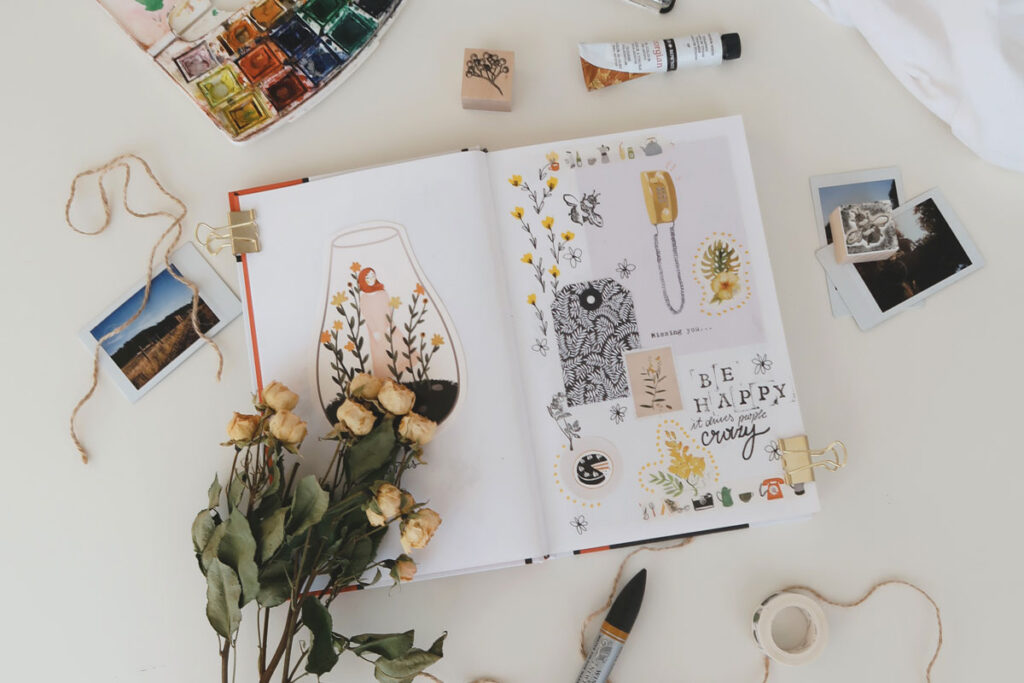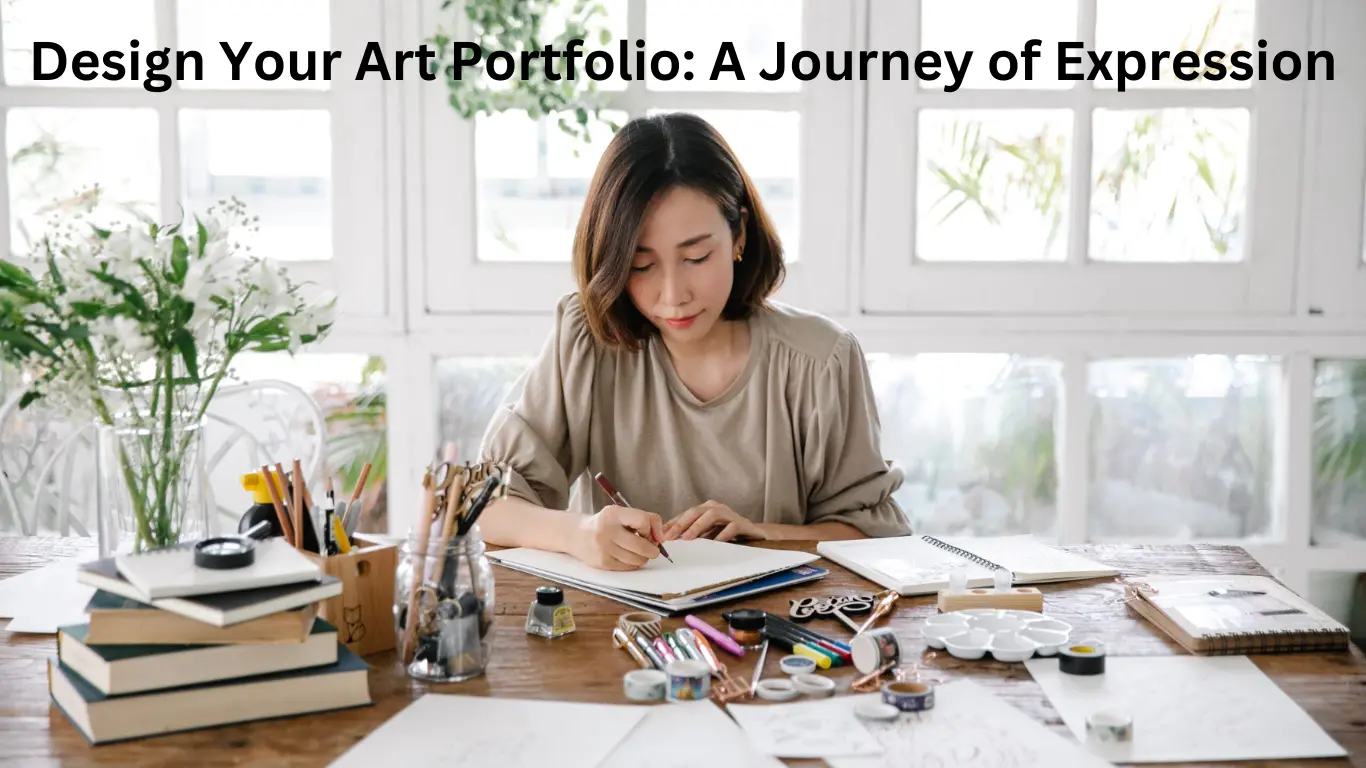Design Your Art Portfolio: A Journey of Expression
Creating an art portfolio is not just a job. It is a personal creative process, a journey of self-discovery that details one’s skills and style. Whether it is to be an aspiring costume designer, a fashion design student, or involved in the film and television industry, your portfolio is your visual story. It tells about your skills, style, and artistic vision that makes you stand out in a very competitive field. Let’s explore the art of conceiving and making an art portfolio, focusing on design principles and core artistic skills.
What Is So Special about a Portfolio?
Pretend you are going through a portfolio that resonates emotionally. You find yourself being drawn into each page as you enter a world full of creativity and passion. That is the kind of portfolio you would like to make. To make your work stand out, emphasize the following design principles:
Cohesiveness and Consistency
A cohesive portfolio tells one story. Pick a unifying theme, or a color palette, and let it do its thing in a representation of your artistry. For instance, if your designs are more vintage, let that vintage appeal take over in your layout, font use, and even the materials you use. Think of your portfolio as a book which each chapter flows into the next for that clean stream-of-consciousness feel.
Quality Over Quantity
It’s tempting to throw everything up but, remember, quality counts. Focus on presenting the best works you have-these would literally showcase your talents and creativity. Narrow it down to around 10 to 15 pieces that would depict a variety of your capabilities such as sketches and final designs and process work. That way, this selection isn’t only sketching your level of skill, but also a focused view of what style and vision you are working with.
How to Proceed with Conceptualisation?
Having a portfolio is intimidating, but breaking it down into these steps helps the process to become more manageable. Here is how to get started:
Reflect on Your Artistic Journey
So, before a line is drawn on the paper, with your pencil or your pen, before a needle strikes the fabric with the creation of stitches, take one minute to reflect. What inspires you? Which themes resonate for you? Think of the possibility of carrying around a journal of ideas, sketches, or even quotes which cross your path inspiring your creativity. This reflection phase will be the underpinning of your portfolio as you build a story that’s actually you.
2. Play Around with Different Formats
Portfolio presentation doesn’t have to be identical for all individuals. Sometimes, you might prefer to have a digital portfolio using online platforms such as Behance or Adobe Portfolio. But then again, there are other cases in which you may only need a printed portfolio for an interview face-to-face. Test both options and settle for the one that best aligns with your own style and expectations of the targeted audience. Whichever you settle on, it’s meant to be user-friendly and aesthetic.

What are Some Critical Design Principles to Keep in Mind?
Remember some of these key design principles as you put together your portfolio. They will make it not only aesthetically appealing but also more impactful as work.
Balance and Composition
Balance is what makes a portfolio compelling. Organize your work with an eye for harmony. This can mean balancing a large image with one much smaller or reflective of a particular color change to add visual interest. Think about the flow of your portfolio – how does every piece lead to the other? A well-crafted portfolio leads the viewer’s eye around and around in a fluid way, from one work to another.
Typography Matters
A good typography may give a great deal of value to your portfolio. Select the right set of fonts that resonate in your design and carry it out with readability. However, avoid too many different fonts, which will create complete chaos in the field of vision. Rather, just stick with one or two typefaces that resonate within your overall aesthetic. In this capacity, detail adds to professionalism and your aesthetic sense.
How Do You Effectively Portray Your Skills?
Your portfolio is your stage for skills demonstration. The presentation makes all the difference. Here are some guidelines on effective work presentation:
Include process work
Process is as important as product. You can add sketches, mood boards or photos of your process. It’s more than just a documentation of the artistic journey, but also your thought process and problem-solving effort. The record of how you transformed from initial sketching to finished piece will give your work a lot more depth, especially in something like costume design.
Tailor for Your Audience
Remember, your audience defines your portfolio. If your audience is those who do work in film and television, keep your work how you understand your character and how your costume works. For courses targeting fashion styling in Chennai, keep concentrating on designs that epitomize the current trends of the season and what is happening around the local market, then.
When is Your Portfolio Complete?
Take a look at your final portfolio. Does it look like it’s complete? Does it represent who I am as an artist? Share the portfolio with mentors, peers, or instructors to get feedback. Constructive criticism can show you things you may not have thought of on your own. Remember, your portfolio is a living document—don’t be afraid to evolve and update it as your skills grow.
Conclusion: Your Portfolio, Your Story
This is actually how making an art portfolio inspires you, because it will be a reflection of how you, in due time, became the designer you are today. You are going to do some really creative highlighting of design principles, honing your artistic skills so that you can curate your best work, which would, in turn, craft a compelling story that resonates with your audience. Your portfolio is more than a display of your designs; it is a reflection of passion, creativity, and a unique artistic voice.


